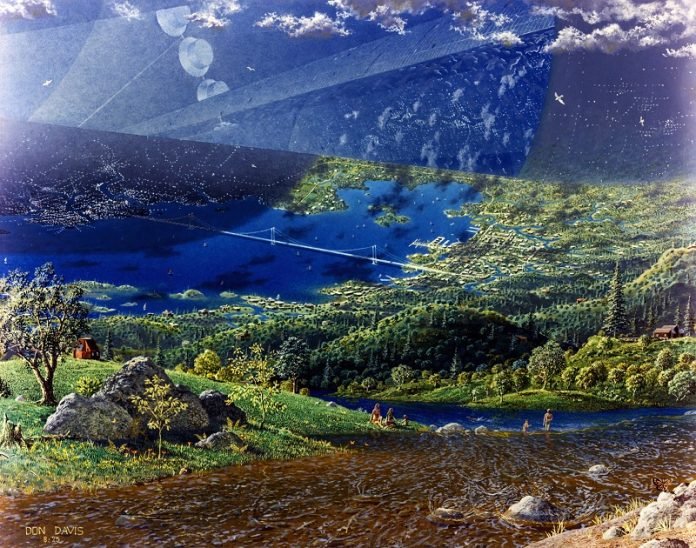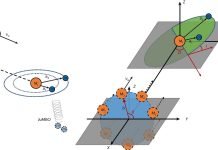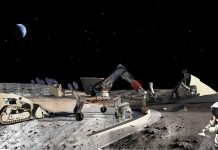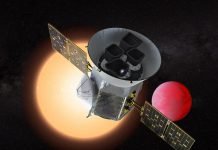
In the near future, humanity stands a good chance of expanding its presence beyond Earth.
This includes establishing infrastructure in Low Earth Orbit (LEO), on the surface of (and in orbit around) the Moon, and on Mars.
This presents numerous challenges, as living in space and on other celestial bodies entails all kinds of potential risks and health hazards – not the least of which are radiation and long-term exposure to low gravity.
These issues demand innovative solutions; and over the years, several have been proposed!
A good example is Dr. Pekka Janhunen‘s concept for a megasatellite settlement in orbit around Ceres, the largest asteroid in the Main Belt.
This settlement would provide artificial gravity for its residents while the local resources would allow for a closed-loop ecosystem to created inside – effectively bringing “terraforming” to a space settlement.
Dr. Janhunen – a theoretical physicist based in Helsinki, Finland – is no stranger to advanced concepts. In addition to being a research manager with the Finnish Meteorological Institute, he is a visiting professor with the University of Tatu and a senior technical advisor to Aurora Propulsion Technologies – where he is overseeing the commercial development of the Electric Solar Wind Sail (E-sail) concept he proposed back in 2006.
The paper that describes his concept recently appeared online and has being submitted for publication to the scientific journal Elsevier.
It’s a concept that Dr. Janhunen described to Universe Today as, “[T]erraforming from the user perspective: creating an artificial environment, near Ceres and of Ceres materials, that can scale up to the same and larger population than Earth has today.”
Rotating space habitats are a time-honored proposal and a suggested alternative to (or in conjunction with) habitats on other celestial bodies.
The first recorded instance was Konstantin Tsiolkovsky’s 1903 book, Beyond Planet Earth, where he described a pinwheel station in space that would rotate to provide artificial gravity.
This was followed by Herman Poto?nik’s expanded proposal in The Problem of Space Travel (1929), the Von Braun Wheel (1952), and Gerard K. O’Neill’s revolutionary proposal in The High Frontier:
Human Colonies in Space (1976) that called for a rotating cylinder in space – aka. the O’Neill Cylinder. However, all these concepts were for stations in Low Earth Orbit (LEO) or at an Earth-Sun Lagrange Point.
As Dr. Janhunen told Universe Today via email, a megasatellite constellation in orbit of Ceres could leverage the local resources to create Earth-like conditions:
“They provide Earth-like 1 g gravity, which is essential for human health, in particular essential for children to grow to healthy adults with fully developed muscles and bones.
Ceres has nitrogen for making the habitat atmospheres, and it is large enough to provide almost unlimited resources. At the same time it is also small enough that its gravity is rather low so that lifting material from the surface is cheap.”
According to his study, the megasatellite settlement would consist of spinning habitats attached to a disk-shaped frame through passive magnetic bearings. This would allow for simulated gravity within the habitats, facilitate intra-settlement travel and ensure that population density remains low.
Dr. Janhunen estimates that it could be kept to 500 people per km2 (190 people per mi2), whereas cities like Manhattan and Mumbai have densities of roughly 27,500 and 32,303 people per km2 (or 71,340 and 83,660 people per mi2), respectively.
The settlement would initially be furnished with soil 1.5 m (~5 ft) in depth, which could be upgraded to 4 m (~13 ft).
This would allow for greenspaces with gardens and trees that would produce the settlement’s oxygen and scrub the atmosphere of CO2 (as well as additional radiation shielding).
Similarly, Ceres is known to have abundant supplies of ammonia salts on its surface (particularly around the bright spots in the Occator crater) that could be imported to the settlement and converted to nitrogen for use as a buffer gas.
Planar and parabolic mirrors located around the frame would direct concentrated sunlight to the habitats, providing illumination and allowing for photosynthesis to occur.
While the creation of such a settlement presents many technical challenges and would require a massive commitment in resources, it would actually be easier in many respects that colonizing the Moon or Mars.
For that matter, it would also be much easier than terraforming the Moon or Mars. As Dr. Janhunen explained:
“In some aspects easier (no need of planetary landing, no dust-storms, no long night). In all cases the main challenge is probably bootstrapping the industry in a remote place – one needs some robotics and AI, but they are coming to existence now, broadly speaking.”
But perhaps the most exciting aspect of this proposal is the fact that it allows for a space elevator!
On Earth, such a structure remains impractical (as well as extremely expensive) because Earth’s gravity (9.8 m/s2, or 1 g) imposes some serious restrictions on space exploration. In short, a rocket must achieve an escape velocity of 11.186 km/s (40,270 km/h; 25,020 mph) to break free of Earth’s gravity.
On Ceres, however, the gravity is a fraction of what it is here on Earth – 0.28 m/s2 (less than 3%), which results in an escape velocity of just 510 meters per second (1.8 km/h; 1.14 mph). Combined with its rapid rotation, a space elevator is totally feasible and would be energetically cheap (compared to transporting them from other locations).
Of course, there’s also the benefit that such a settlement would have for exploring (and colonizing) the outer Solar System.
With a large population and infrastructure around Ceres, ships destined for Jupiter, Saturn, and beyond would have a stopover point to refuel and take on supplies. Potential destinations for colonies could include the Galilean Moons, the moons of Saturn, or orbiting habitats in both systems.
This would give humanity access to the abundant resources of these systems and usher in an age of post-scarcity. In the meantime, this Ceres megaconstellation would provide an Earth-like environment for a sizeable population within the Main Asteroid Belt, one that could be upgraded to make room for many more people. As Dr. Janhunen indicated:
“The Ceres megasatellite could scale up to hundreds of billions of people, probably, so it would suffice at least for a few centuries. Discussing future beyond that is hard, but in general, spreading to multiple places is what life generally does.
On the other hand, people like to live in an interconnected world whose parts can [all] be accessed by travel.”
At its core, Dr. Janhunen’s concept is a marriage of space construction and in-situ resource utilization (ISRU) with some key elements of terraforming thrown in.
The end result of this is a design for a scalable settlement that could allow human beings to colonize otherwise uninhabitable parts of the Solar System. When addressing the future of humanity in space, both the challenges and the rewards are clear.
In order to get to the rewards, we need to get mighty creative and be prepared to commit!
Written by Matt Williams.
Source: Universe Today.




